- Home
- Clive Cussler
Plague Ship tof-5
Plague Ship tof-5 Read online
Plague Ship
( The Oregon Files - 5 )
Clive Cussler
In the dependably entertaining if less than top-notch fifth Oregon Files thriller from bestseller Cussler and Du Brul (after Skeleton Crew), Capt. Juan Cabrillo, who heads the Corporation, a covert military company for hire, and the multifaceted crew of the Oregon, a high-tech ship disguised to look like a tramp steamer, take on a group known as the Responsivists. The Responsivists publicly espouse a program of global population control, but are secretly planning a devastating attack on the human race utilizing a virulent virus found aboard an ancient ship that may be Noah's Ark. The authors are up to their usual high standards when in fighting mode, though the chief villain, the doctor who heads the Responsivists, falls short of Juan's billing as the single-most-evil human being I have ever met. Readers may wish that next time out the bad guys put up more of a struggle.
DIRK PITT® ADVENTURES BY CLIVE CUSSLER
Treasure of Khan(with Dirk Cussler)
Black Wind(with Dirk Cussler)
Trojan Odyssey
Valhalla Rising
Atlantis Found
Flood Tide
Shock Wave
Inca Gold
Sahara
Dragon
Treasure
Cyclops
Deep Six
Pacific Vortex
Night Probe
Vixen 03
Raise the Titanic!
Iceberg
The Mediterranean Caper
KURT AUSTIN ADVENTURES BY CLIVE CUSSLER WITH PAUL KAMPRECOS
The Navigator
Polar Shift
Lost City
White Death
Fire Ice
Blue Gold
Serpent
OREGON FILES ADVENTURES BY CLIVE CUSSLER
WITHE JACK DU BRUL
Skeleton Coast
Dark Watch
WITH CRAIG DIRGO
Sacred Stone
Golden Buddha
OTHER FICTION BY CLIVE CUSSLER
The Chase
NONFICTION BY CLIVE CUSSLER AND CRAIG DIRGO
The Sea Hunters
The Sea Hunters II
Clive Cussler and Dirk Pitt Revealed
Clive Cussler and Dirk Pitt Revealed
PLAGUE SHIP
A NOVEL OF THE OREGON FILES
CLIVE CUSSLER WITH JACK DU BRUL
Plague went through Europe and killed a third of its population. Lands were consolidated, allowing for a greater standard of living, not only for the owners but also for those who worked them. This event was the single greatest contributor to the Renaissance and gave rise to Europe’s eventual domination of the world.
We’re Breeding Ourselves to Death:
How Overpopulation Will Destroy Civilization, by Dr. Lydell Cooper, Raptor Press, 1977
PROLOGUE
BARENTS SEA
NORTH OF NORWAY
APRIL 29, 1943
A PALE HUNTER’S MOON HUNG ABOVE THE HORIZON so that its light threw dazzling reflections off the frigid ocean. With winter not yet given way to spring, the sun had yet to rise this year.
Instead, it remained hidden behind the earth’s curvature, a faint glowing promise that crept along the line where sky met sea as the planet spun on its tilted axis. It would be another month before it would fully show itself, and, once it did, it would not disappear again until fall. Such was the odd cycle of day and night above the Arctic Circle.
By rights of their extreme northern latitudes, the waters of the Barents Sea should be frozen over and impassable for most of the year. But the sea was blessed with warm waters cycling up from the tropics on the Gulf Stream. It was this powerful current that made Scotland and the northern reaches of Norway habitable, and kept the Barents free of ice and navigable even in the deepest winters. For this reason, it was the primary route for war material being convoyed from the tireless factories of America to the embattled Soviet Union. And like so many such sea routes—the English Channel or the Gibraltar Strait—it had become a choke point and, thus, a killing ground for the wolfpacks of the Kriegsmarine and shore-based Schnellboots, the fast-attack torpedo boats.
Far from random, the placement of U-boats was planned out with the forethought of a chess master advancing his pieces. Every scrap of intelligence was gathered about the strength, speed, and destination of ships plying the North Atlantic in order to have submarines positioned to strike.
From bases in Norway and Denmark, patrol aircraft scoured the seas, looking for the convoys of merchantmen, radioing positions back to fleet headquarters so the U-boats could lie in wait for their prey.
For the first years of the war, the submarines enjoyed near-total supremacy of the seas, and untold millions of tons of shipping had been sunk without mercy. Even under heavy escort by cruisers and destroyers, the Allies could do little more than play the odds of having one ship sunk for every ninety-nine that made it through. By being gambled so coldly, the men of the merchant marine paid as high a toll as frontline combat units.
That was about to change this night.
The four-engined Focke-Wulf Fw 200 Kondor was a massive plane—seventy-seven feet long, with a wingspan of nearly one hundred and ten feet. Designed before the war for Lufthansa as a passenger airliner, the aircraft had been quickly pressed into military duty as both a transport and a long-range reconnaissance platform. Her twenty-five-hundred-mile range allowed the Kondor to remain aloft for hours and hunt Allied shipping far from shore.
Used in an attack roll through 1941 by carrying four five-hundred-pound bombs under her wings, the Kondor had taken some heavy losses and was now strictly employed as a reconnaissance plane, and remained well above Allied antiaircraft fire during their patrols.
The aircraft’s pilot, Franz Lichtermann, chafed at the monotonous hours spent searching the trackless sea. He longed to be in a fighter squadron, fighting the real war, not loitering thousands of feet above frigid nothingness hoping to spot Allied shipping for someone else to sink. Back at base, Lichtermann maintained a high level of military decorum and expected the same from his men. However, when they were on patrol and the minutes stretched with the elasticity of India rubber, he allowed a certain amount of familiarity among the five-man crew.
“That should help,” he commented over the intercom and jerked his head in the direction of the dazzling moon.
“Or its reflection will hide a convoy’s wake,” his copilot, Max Ebelhardt, replied in his customary pessimistic tone.
“With the sea this calm we’ll spot them even if they’ve stopped to ask for directions.”
“Do we even know if anyone’s out here?” The question came from the crew’s youngest member, Ernst Kessler. Kessler was the Kondor ’s rear gunner and sat scrunched at the aft of the ventral gondola that ran the partial length of the aircraft’s fuselage. From behind his Plexiglas shield and over the barrel of a single MG-15 machine gun, he could see nothing other than what the Kondor had already flown over.
“The squadron commander assured me that a U-boat returning from patrol spotted at least a hundred ships two days ago above the Faeroe Islands,” Lichtermann told his crew. “The ships were heading north, so they’ve got to be out here somewhere.”
“More likely, the U-boat commander just wanted to report something after missing with all his torpedoes,” Ebelhardt groused, and made a face after a sip of tepid ersatz coffee.
“I’d rather just spot them, then sink them,” Ernst Kessler said. The gentle lad was barely eighteen, and had harbored ambitions of being a doctor before he had been drafted. Because he came from a poor rural family in Bavaria, his chances of an advanced education were nil, but that didn’t prevent him from spending his off-hour
s with his nose buried in medical journals and texts.
“That isn’t the proper attitude of a German warrior,” Lichtermann admonished gently. He was thankful that they had never come under enemy attack. He doubted Kessler would have the stomach to open fire with his machine gun, but the boy was the only member of his crew who could sit facing aft for hour after hour without becoming incapacitated by nausea.
He thought grimly about all the men dying on the Eastern Front, and about how the tanks and planes shipped to the Russians prolonged the inevitable fall of Moscow. Lichtermann would be more than happy to sink a few ships himself.
Another tedious hour dragged by, the men peering into the night in hopes of spotting the convoy.
Ebelhardt tapped Lichtermann on the shoulder and pointed to his log. Although the fore gunner kneeling at the front of the ventral gondola was the official navigator, Ebelhardt actually calculated their flight time and direction, and he was indicating that it was time for them to turn and search another swath of open sea.
Lichtermann applied rudder and eased over the yoke in an easy turn to port, never taking his eyes off the horizon, as the moon seemed to swing across the sky.
Ernst Kessler prided himself at having the sharpest eyes aboard the aircraft. When he was a boy, he would dissect dead animals he found around the family farm to learn their anatomy, comparing what he saw to books on the subject. He knew his keen vision and steady hands would make him an excellent doctor. His senses, however, were just as adept at finding an enemy convoy.
By rights of his aft-facing station, he shouldn’t have been the one to spot it, but he did. As the plane canted over, an unnatural glint caught his attention, a flash of white far from the moon’s reflection.
“Captain!” Kessler cried over the intercom. “Starboard side, bearing about three hundred.”
“What did you see?” The primeval thrill of the hunt edged Lichtermann’s voice.
“I’m not sure, sir. Something. A glimmer of some kind.” Lichtermann and Ebelhardt strained to see in the darkness where young Kessler had indicated, but there was nothing apparent.
“Are you sure?” the pilot asked.
“Yes, sir,” Kessler replied, forcing confidence into his reply. “It was when we turned. The angle changed, and I’m sure I saw something.”
“The convoy?” Ebelhardt asked gruffly.
“I can’t say,” Ernst admitted.
“Josef, get the radio powered up,” Lichtermann said, ordering the fore gunner to his ancillary position.
The pilot added more power to the BMW radial engines, and banked the aircraft once again. Their drone became a bit sharper, as the props tore through the air.
Ebelhardt had a pair of binoculars pressed to his eyes as he searched the blackened sea. Rushing toward a possible contact at two hundred miles per hour, he should spot the convoy any moment, but, as seconds grew into a minute and nothing revealed itself, he lowered the binoculars again. “Must have been a wave,” he said without keying the intercom microphone, so only Lichtermann heard.
“Give it a chance,” Lichtermann replied. “Kessler can see in the dark like a damned cat.” The Allied powers had done a remarkable job of applying dizzying camouflage patterns to their freighters and tankers, to prevent observers from seeing the ships from the surface, but nothing could hide a convoy at night, since the wakes that formed behind the vessels burned white against the ocean.
I’ll be damned, Ebelhardt mouthed, and then pointed through the windscreen.
At first, it was just a large patch of gray on the otherwise-dark water, yet, as they flew closer, the gray sharpened to become dozens of parallel white lines, as distinct as chalk marks on a blackboard. They were the wakes of an armada of ships, driving eastward as fast as it could. From the Kondor’s altitude, the ships looked as plodding as elephants traveling in a herd.
The Kondor flew closer still, until the moon’s sharp glare allowed the crew to distinguish between the slower freighters and tankers and the slim wakes of destroyers set like pickets along each flank of the convoy. As they watched, one of the destroyers was making a fast run up the starboard side of the convoy, smoke pouring from her two stacks. When the destroyer reached the head of the convoy, it would slow again, and let the freighters pass it by, in what the Allies called an “Indian run.” At the tail of the mile-long convoy, the destroyer would accelerate once again, in a never-ending cycle. In this way, it took fewer combat vessels to provide cover for the convoys.
“There must be two hundred ships out there,” Ebelhardt estimated.
“Enough to keep the Reds fighting for months,” the pilot agreed. “Josef, how’s it coming with the radio?”
“I have nothing but static.”
Static was a common enough problem, working this far above the Arctic Circle. Charged particles striking the earth’s magnetic field were driven to ground at the poles and played havoc with the radios’
vacuum tubes.
“We’ll mark our position,” Lichtermann said, “and radio in our report when we get closer to base. Hey, Ernst, well done. We would have turned away and missed the convoy, if it weren’t for you.”
“Thank you, sir.” Pride was evident in the boy’s response.
“I want a better count of the convoy’s size, and a rough approximation of their speed.”
“Let’s not get so close that those destroyers open up,” Ebelhardt cautioned. He had seen combat firsthand and was flying second stick now because of a piece of shrapnel buried in his thigh, thanks to antiaircraft fire over London. He recognized the look in Lichtermann’s eye and the excitement in his voice. “And don’t forget the CAMs.”
“Trust me,” the pilot said with cocky bravado, and wheeled the big plane closer to the slow-moving fleet ten thousand feet below them. “I’m not going to get too close, and we’re too far from land for them to launch a plane at us.”
CAMs, or Catapult Aircraft Merchantmen, were the Allies’ answer to German aerial reconnaissance. A long rail was mounted over the bows of a freighter, and, with a rocket assist, they could launch a Hawker Sea Hurricane fighter aircraft to shoot down the lumbering Kondor s or even attack surfaced U-boats.
The drawback to the CAMs was that the planes couldn’t land back aboard their mother ship. The Hurricanes either had to be close enough to Great Britain or some other friendly area for the pilots to land normally. Otherwise, the plane had to be ditched in the sea and the pilot rescued from the water.
The convoy steaming below the Fw 200 was more than a thousand miles from any Allied territory, and even with the bright moon a downed pilot would be impossible to rescue in the dark. There would be no Hurricanes launched tonight. The Kondor had nothing to fear from the mass of Allied shipping unless it strayed within range of the destroyers and the curtain of antiaircraft fire they could throw into the sky.
Ernst Kessler was counting rows of ships when winking lights suddenly appeared on the decks of two of the destroyers. “Captain!” he cried. “Fire from the convoy!” Lichtermann could just make out the destroyers beneath his wing. “Easy, lad,” he said. “Those are signal lamps. The ships are sailing under strict radio silence, so that’s how they communicate.”
“Oh. Sorry, sir.”
“Don’t worry about it. Just get as accurate a count as you can.” The Kondor had been flying a lazy circle around the flotilla and was passing along its northern flank when Dietz, who manned the upper gun platform, shouted, “Incoming!” Lichtermann had no idea what the man was talking about and was a beat slow in reacting. A perfectly aimed string of 7.7mm machine-gun rounds raked the Kondor’s upper surface, starting at the base of the vertical stabilizer and walking up the entire length of the plane. Dietz was killed before he could get a shot off. Bullets penetrated the cockpit, and, amid the harsh patter of them ricocheting off metallic surfaces and the whistle of wind through rents in the fuselage, Lichtermann heard his copilot grunt in pain. He looked over to see the front of Ebelhardt’s flight jacket cov
ered in blood.
Lichtermann mashed the rudder and pressed hard on the yoke to dive away from the Allied aircraft that had come out of nowhere.
It was the wrong maneuver.
Launched just weeks earlier, the MV Empire MacAlpine was a late addition to the convoy. Originally built as a grain carrier, the eight-thousand-ton vessel had spent five months in the Burntisland Shipyard having her superstructure replaced by a small control island, four hundred and sixty feet of run-way, and a hangar for four Fairley Swordfish torpedo bombers. She could still haul nearly as much grain as she could before her conversion. The Admiralty had always considered the CAMs a stopgap measure until a safer alternative could be found. As it was, the Merchant Aircraft Carriers, or MACs, like the MacAlpine, were to be used only until England secured a number of Essex Class escort carriers from the United States.
While the Kondor loitered over the convoy, two of the Swordfish had been launched from the MacAlpine and flown far enough out from the fleet that, when they climbed into the inky sky to ambush the much larger and faster German aircraft, Lichtermann and his men never knew they were coming. The Fairleys were biplanes, with top speeds barely half that of the Kondor. They each carried a Vickers machine gun, mounted above the radial engine’s cowling, and a gimballed Lewis gun in a rear-facing cockpit.
The second Swordfish lay in wait three thousand feet below the Focke-Wulf and was nearly invisible in the darkness. As the Kondor dove away from the first attacker, the second torpedo bomber, stripped of anything that could slow it, was in position.
A stream of fire poured into the front of the Kondor from the Vickers, while the second gunner leaned far over the rear cockpit coaming to train his Lewis gun on the pair of BMW engines attached to the port wing.
Coin-sized holes appeared all around Ernst Kessler, the aluminum glowing cherry red for an instant before fading. There had been only a few seconds between Dietz’s scream and the barrage that swept the underside of the Kondor, not nearly long enough for fear to cripple the teen. He knew his duty.
Swallowing hard because his stomach had yet to catch up with the plummeting aircraft, he squeezed his MG-15’s trigger, as the Fw continued to dive past the slower Swordfish. Tracers began to fill the sky, and he aimed the 7.92mm weapon like a fireman directing a stream of water. He could see a circle of little jets of fire glowing in the darkness. It was the exhaust popping around the Fairley’s radial engine, and it was there that he targeted the withering fire, even as his own plane was continuously hammered by the British craft.

 Deep Six
Deep Six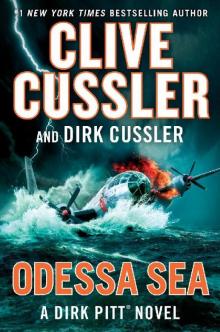 Odessa Sea
Odessa Sea Flood Tide
Flood Tide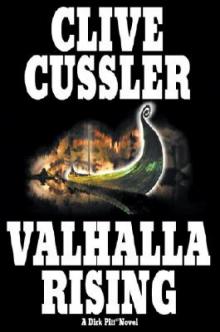 Valhalla Rising
Valhalla Rising Thriller 2
Thriller 2 The Tombs
The Tombs Lost Empire
Lost Empire The Gray Ghost
The Gray Ghost The Eye of Heaven
The Eye of Heaven Polar Shift
Polar Shift The Kingdom
The Kingdom Trojan Odyssey
Trojan Odyssey Shadow Tyrants
Shadow Tyrants Nighthawk
Nighthawk Blue Gold
Blue Gold Serpent
Serpent Lost City
Lost City The Gangster
The Gangster White Death
White Death Inca Gold
Inca Gold The Mayan Secrets
The Mayan Secrets The Pharaoh's Secret
The Pharaoh's Secret The Emperor's Revenge
The Emperor's Revenge Corsair
Corsair Sacred Stone
Sacred Stone The Silent Sea
The Silent Sea The Rising Sea
The Rising Sea Black Wind
Black Wind Fast Ice
Fast Ice Ghost Ship
Ghost Ship Marauder
Marauder The Thief
The Thief Medusa
Medusa Typhoon Fury
Typhoon Fury Journey of the Pharaohs
Journey of the Pharaohs The Navigator
The Navigator The Saboteurs
The Saboteurs Crescent Dawn
Crescent Dawn Skeleton Coast
Skeleton Coast Wrath of Poseidon
Wrath of Poseidon The Mediterranean Caper
The Mediterranean Caper The Romanov Ransom
The Romanov Ransom Treasure
Treasure The Race
The Race The Bootlegger
The Bootlegger Spartan Gold
Spartan Gold Havana Storm
Havana Storm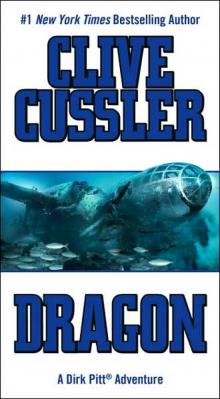 Dragon
Dragon Piranha
Piranha Poseidon's Arrow
Poseidon's Arrow The Cutthroat
The Cutthroat Atlantis Found
Atlantis Found The Jungle
The Jungle The Oracle
The Oracle Treasure / Dragon / Sahara: Clive Cussler Gift Set
Treasure / Dragon / Sahara: Clive Cussler Gift Set Clive Cussler and Dirk Pitt Revealed
Clive Cussler and Dirk Pitt Revealed The Sea Hunters
The Sea Hunters Pirate
Pirate The Striker
The Striker Plague Ship
Plague Ship The Wrecker
The Wrecker Iceberg
Iceberg The Chase
The Chase The Spy
The Spy Golden Buddha
Golden Buddha The Titanic Secret
The Titanic Secret Zero Hour
Zero Hour Fire Ice
Fire Ice Dark Watch
Dark Watch The Storm
The Storm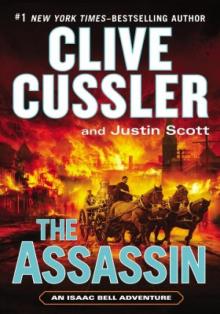 The Assassin
The Assassin Vixen 03
Vixen 03 Arctic Drift
Arctic Drift Night Probe!
Night Probe! Cyclops
Cyclops Medusa nf-8
Medusa nf-8 Shock Wave dp-13
Shock Wave dp-13 Marauder (The Oregon Files)
Marauder (The Oregon Files) Lost Empire fa-2
Lost Empire fa-2 Arctic Drift dp-20
Arctic Drift dp-20 Dirk Pitt 22 - Poseidon's Arrow
Dirk Pitt 22 - Poseidon's Arrow Treasure of Khan dp-19
Treasure of Khan dp-19 Dark Watch of-3
Dark Watch of-3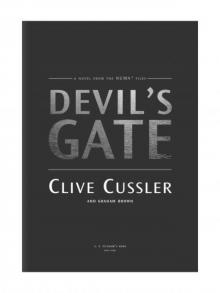 Devil's Gate
Devil's Gate The Sea Hunters II: More True Adventures with Famous Shipwrecks
The Sea Hunters II: More True Adventures with Famous Shipwrecks Flood Tide dp-14
Flood Tide dp-14 The Mediterranean Caper dp-2
The Mediterranean Caper dp-2 Iceberg dp-3
Iceberg dp-3 Sahara dpa-11
Sahara dpa-11 Pacific Vortex! dp-1
Pacific Vortex! dp-1 Deep Six dp-7
Deep Six dp-7 Dragon dp-10
Dragon dp-10 Serpent nf-1
Serpent nf-1 Havana Storm (Dirk Pitt Adventure)
Havana Storm (Dirk Pitt Adventure)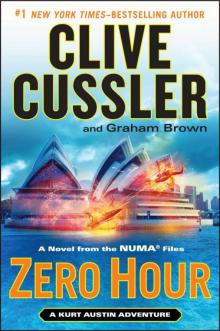 Zero Hour nf-11
Zero Hour nf-11 The Storm nf-10
The Storm nf-10 The Thief ib-5
The Thief ib-5 Lost City nf-5
Lost City nf-5 The Mayan Secrets fa-5
The Mayan Secrets fa-5 White Death nf-4
White Death nf-4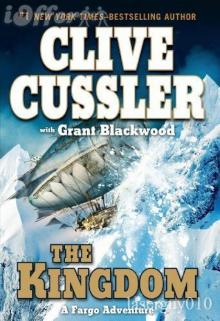 The Kingdom fa-3
The Kingdom fa-3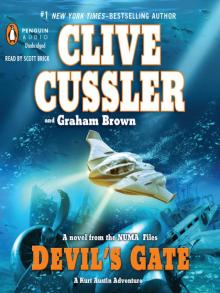 Devil's Gate nf-9
Devil's Gate nf-9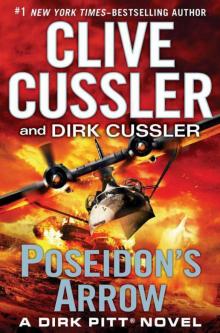 Poseidon's Arrow dp-22
Poseidon's Arrow dp-22 Raise the Titanic dp-4
Raise the Titanic dp-4 Shadow Tyrants--Clive Cussler
Shadow Tyrants--Clive Cussler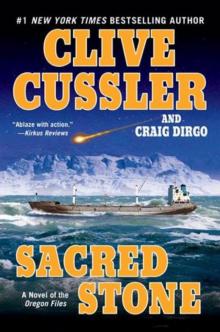 Sacred Stone of-2
Sacred Stone of-2 Skeleton Coast tof-4
Skeleton Coast tof-4 Mirage tof-9
Mirage tof-9 The Jungle of-8
The Jungle of-8 The Emperor's Revenge (The Oregon Files)
The Emperor's Revenge (The Oregon Files) Golden Buddha of-1
Golden Buddha of-1 Blue & Gold
Blue & Gold The Tombs fa-4
The Tombs fa-4 Inca Gold dp-12
Inca Gold dp-12 Treasure dp-9
Treasure dp-9 Atlantis Found dp-15
Atlantis Found dp-15 Black Wind dp-18
Black Wind dp-18 the Silent Sea (2010) tof-7
the Silent Sea (2010) tof-7 The Wrecker ib-2
The Wrecker ib-2 Fire Ice nf-3
Fire Ice nf-3 The Chase ib-1
The Chase ib-1 Sahara
Sahara The Striker ib-6
The Striker ib-6 Polar Shift nf-6
Polar Shift nf-6 The Race ib-4
The Race ib-4 Corsair of-6
Corsair of-6 Cyclops dp-8
Cyclops dp-8 The Navigator nf-7
The Navigator nf-7 Plague Ship tof-5
Plague Ship tof-5 Sea of Greed
Sea of Greed Vixen 03 dp-5
Vixen 03 dp-5 Thriller 2: Stories You Just Can't Put Down
Thriller 2: Stories You Just Can't Put Down